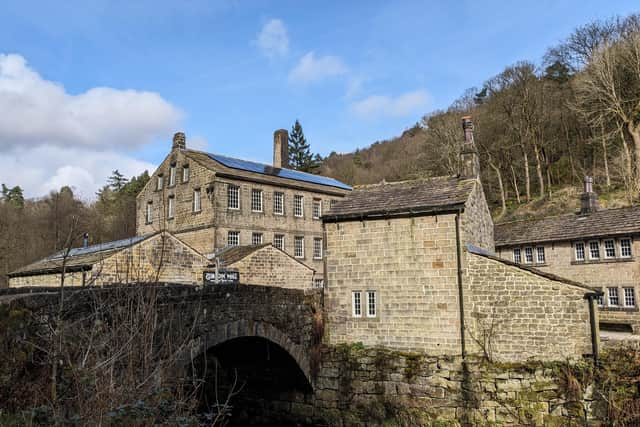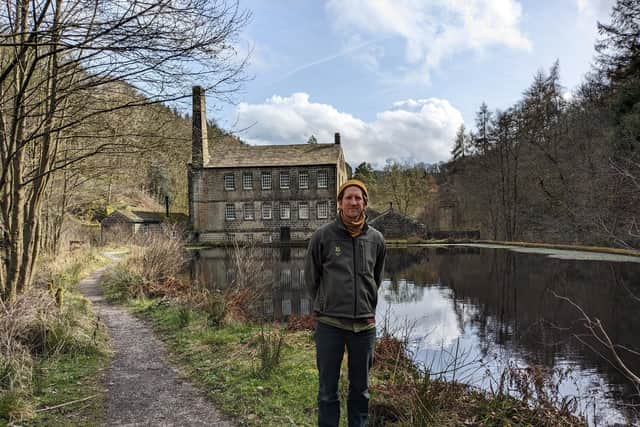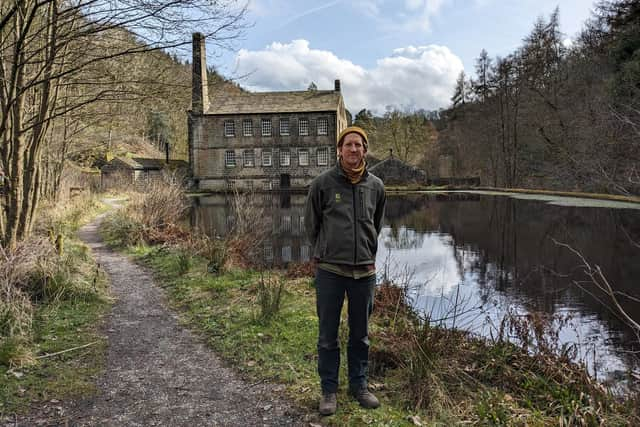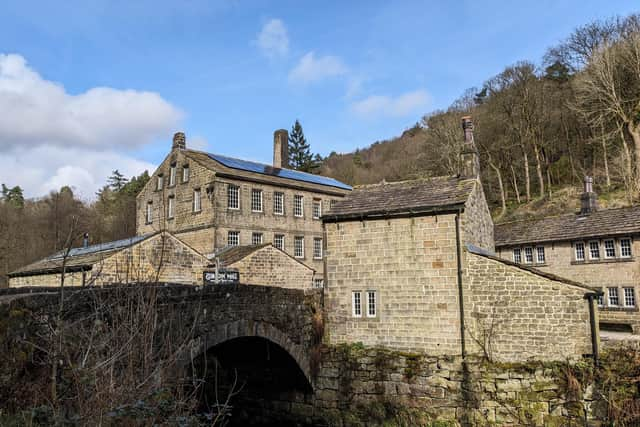Gibson Mill: The Yorkshire mill which has been running off-grid for the last 20 years
Gibson Mill at Hardcastle Crags near Hebden Bridge has been running as an off-grid site using solar and hydro power for nearly 20 years.
Now, thanks to a major upgrade to their solar panels, which they have labelled a “game-changing” project, staff at the Grade II-listed building no longer need to worry about keeping the ice cream freezers running and putting the kettle on to serve guests tea and coffee if the great English weather takes a turn.
Advertisement
Hide AdAdvertisement
Hide AdSite manager, Chris Bryerley said: “Two or three years ago we’d have cloudy days where we wouldn’t be able to serve hot food to our guests.


“We’ve always tried to educate people about why that was, with us being an entirely off-grid site. But now, with our state-of-the-art solar panels, we’re always generating power even on cloudy days.
“It’s fantastic because we can offer our visitors an even better experience and really show off what modern sustainable buildings can do.”
The new solar array, which was installed by Halifax-based Eclipse Energy, generates up to 9,626kWh of electricity annually. This is a near-300 per cent increase on the old panels, which will be reused by Fountains Abbey as a small part of their own solar project.
Advertisement
Hide AdAdvertisement
Hide AdThe extra energy means staff at Gibson Mill can finally wave goodbye to their old diesel generator, which was needed to power larger events such as weddings.


Mr Bryerley said the generator was smelly, noisy and dirty and won’t be missed.
He added: “We won’t miss it and nor will our visitors, as it was the biggest source of complaints we got. We understood that criticism because we promote ourselves as an off-grid, sustainable site but the technology was outdated and struggled to cope with how popular we’ve become.
“Now when we have busy days or big events visitors can know that their ice creams, teas and coffees have all been powered by clean energy produced on site.”
Advertisement
Hide AdAdvertisement
Hide AdGibson Mill is situated in a wooded valley and is a popular place for walkers to stop and take a break along Hebden Beck.


Producing its own energy, it is hoped the building can also be there to educate the public about sustainability, which is a key part of its heritage.
“The only reason the mill is here is because the adjacent river meant it could produce its own power via a waterwheel”, explains Mr Bryerley.
"So ever since 1805 this site has had a heritage of making energy from renewable sources - now we’ve come full circle.”
Advertisement
Hide AdAdvertisement
Hide AdAlongside the solar panels, the site still uses hydro power from the river, which agai n can be sporadic and unpredictable as weather becomes more extreme.


He said: “Hydro power works best with a regular flow of water and, as the weather becomes more unpredictable because of climate change, that’s harder to maintain. When we have droughts in summer the river is too low, and when we have heavy periods of rain the site floods and we can’t run the hydro. It’s why upgrading the solar panels was so important.”
Instead of hiding the technology away for aesthetic value, it has been designed so that visitors can see for themselves how the site is powered, and inside the mill, all the dials which show how much power is being produced from both the solar and hydro power are on display.
“People love watching the dials go up and down as the sun moves behind clouds,” Mr Bryerley says. “It’s actually really educational, because people can see that even on a cloudy day these panels are still producing a lot of energy.”
Advertisement
Hide AdAdvertisement
Hide AdThe project was carried out by local business Eclipse Energy, and renewables director Dan Cawdron was “thrilled” to work on it.
He said: “Our goal is to not only provide cutting-edge solar technology but to contribute to the preservation of historical landmarks.
"Gibson Mill stands as a testament to the integration of modern sustainability with the rich history it embodies.
“Working with the National Trust has been inspiring for us. Their commitment to decarbonising such historic buildings while maintaining their character shows that Net Zero can be achieved across the country.”
Gibson Mill was built in 1805 and was of the first cotton mills of the industrial revolution.
Comment Guidelines
National World encourages reader discussion on our stories. User feedback, insights and back-and-forth exchanges add a rich layer of context to reporting. Please review our Community Guidelines before commenting.
